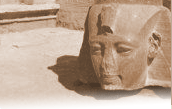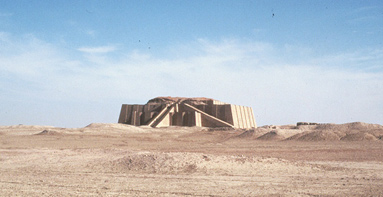 |
 |
The City of URUr was located near the original place where the Tigris and Euphrates rivers flowed into the Persian Gulf, although today it lies far inland. During the Early Dynastic Period, Ur emerged as one of about a dozen competing City-States that characterized Mesopotamian civilization. The wealth and power of the ruling elite is dramatically attested in the royal burials at Ur during the Early Dynastic Period, like that of Queen Puabi (c. 2600 BC), which you can explore further here. As you can see from the photo and plan here, the Ziggurat, or temple platform, of Ur-Nammu (c. 2100 BC) dominated the city and was dedicated to Nanna, the moon god. It was both a religious and economic center. Take a minute to explore the photo links, they will help you to appreciate the scale and skill of construction evidenced in the ruins of this once great city.
|
|
Aerial Photo of Ur Archaeological Map of Ur Photo of City Archaeological Map of City |
Organized warfare attested in both written records and physically by the massive defense walls built around important cities like Ur, where a large portion of the population lived for protection. You can read more about Ur-Nammu in the Anthology section of this week’s Assignment in the Study Guide. The houses described by Woolley in the Anthology reading date to the Isin-Larsa period (c. 2000 BC), when those two cities struggled to unite the Mesopotamian city states under one king, a feat realized only briefly by Hammurabi of Babylon, who set up a victory stela in the sacred precinct at Ur. This prosperous neighborhood of the city included large mansions, smaller houses, a school for learning cuneiform writing (no. I Store Street), numerous chapels dedicated to various Sumerian deities, and a series of fast food shops in nos. XII, X, and VIII Paternoster Row (Woolley named the streets after his alma mater, Oxford). You can explore it further here.
|
